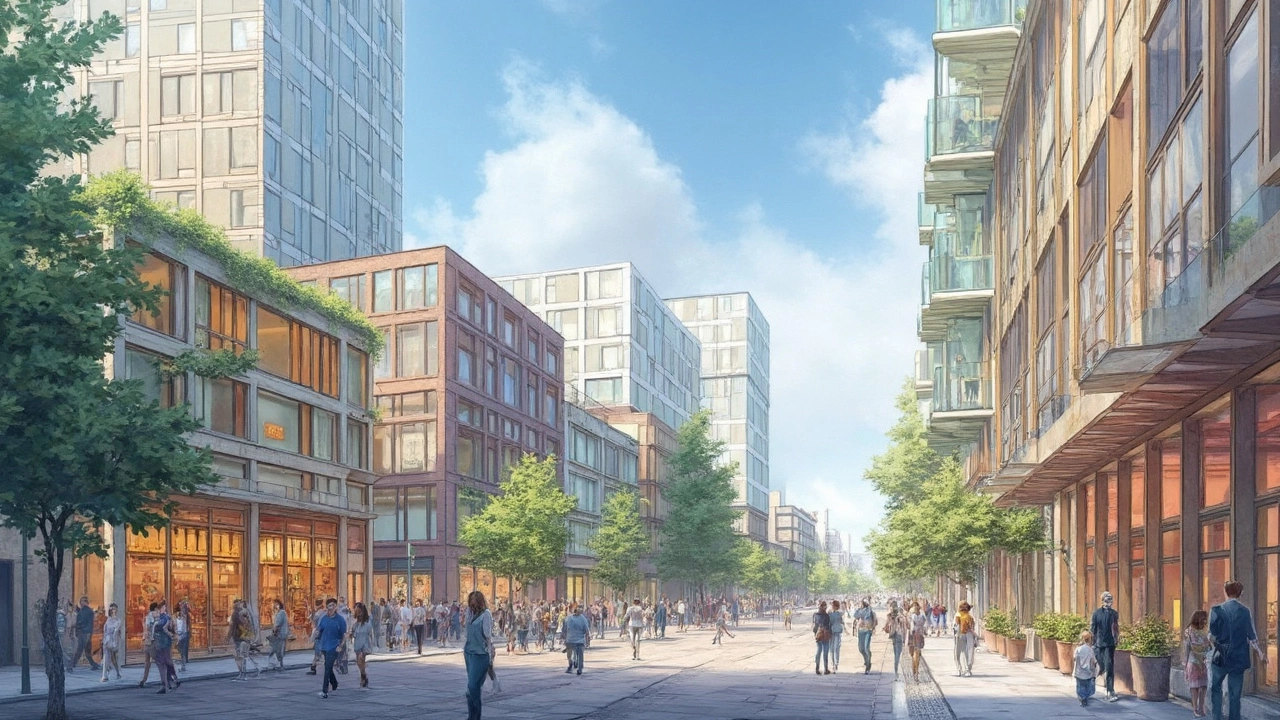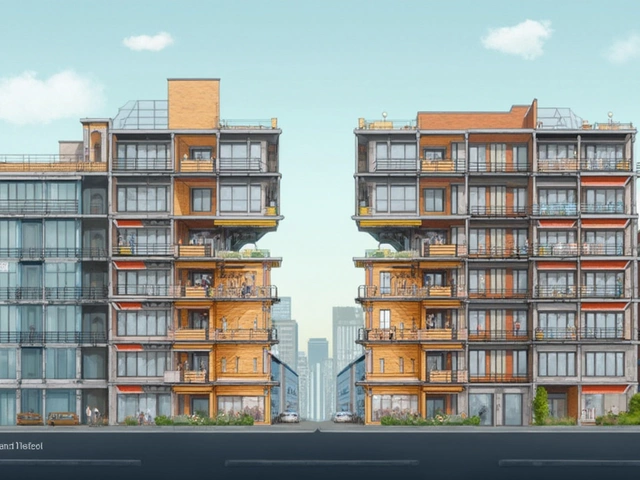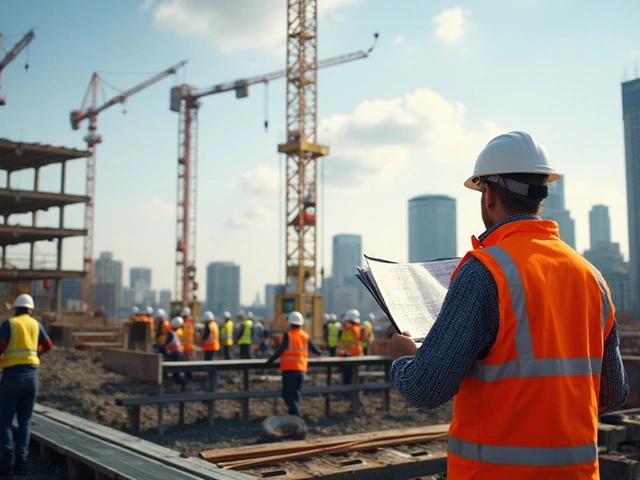Ever stand in the middle of a new office block and wonder how different it really is from the highway being built a mile away? You’re not alone. Civil and commercial construction are often tossed around in conversations as if they mean the same thing. Spoiler: they're quite different.
Civil construction typically tackles public infrastructure. Think about roads, bridges, and those massive dam projects you see on television. These are the backbone projects that keep our communities ticking. They're not about making a building look good but making sure it can withstand the test of time and use.
- Defining Civil Construction
- What Is Commercial Construction?
- Key Differences Between Civil and Commercial
- Why Differentiation Matters
- Real-World Examples
- Tips for Project Success
Defining Civil Construction
Alright, let's break down civil construction. This is the field that literally lays down the foundations of modern society. When you think about all the infrastructure we rely on daily—roads, bridges, even the underground pipelines—this is civil construction at work.
Unlike commercial construction, which is all about creating buildings for business needs, civil construction focuses on public infrastructure. It’s really the backbone of our cities and towns, handling both the big visible projects and the out-of-sight essentials, like sewage systems and water treatment plants.
An interesting tidbit? The scale of civil construction is often massive because it generally serves a large number of people, yet it can sometimes be overlooked because we just expect our roads and bridges to be there, right? But without this sector we’d be, well, stuck in the mud, literally.
In terms of structure, civil construction projects need to meet rigorous standards since their failure can affect thousands, if not millions, of people. They’re often funded by government agencies, which means that planning and execution need to meet high expectations, with a heavy emphasis on safety and durability.
- Roads and Highways: This involves not just paving but comprehensive planning to ensure routes are efficient and safe.
- Bridges: These projects demand precision engineering—one crack can mean disaster.
- Public Utilities: Think of all the underground work for water, electricity, and gas that happens right under your feet without you even noticing.
In short, civil construction is about keeping everything running smoothly, even when Mother Nature throws a tantrum. It's the unsung hero of the construction world, seamlessly blending engineering with a touch of public service.
What Is Commercial Construction?
Now, let's chat about commercial construction. This is all about building structures for commercial purposes—stuff like malls, hospitals, office spaces, and restaurants. These buildings are designed to support businesses operating within them, and that's a big job with a different set of requirements than a bridge or a dam.
Commercial construction includes a mix of design, financing, and legal regulations specific to the business sector. So, planning a shiny new bank branch isn't just about the walls and roof—it's about meeting the needs of businesses and customers. This involves complying with safety standards, accessibility needs, and energy efficiency.
According to a report from the U.S. Census Bureau, “The value of commercial construction in the U.S. reached around $92 billion in 2023.” That's a whole lot of concrete, steel, and glass going into these buildings.
The American Institute of Architects states, "Commercial buildings are more than just structures to house businesses; they're the visual representations of the companies themselves."
Unlike civil construction, which is typically funded by public money, commercial construction often involves private investments and funding strategies. This means timelines, budgets, and expectations can vary significantly depending on the stakeholders involved.
When you're building something that might someday house a law firm or retail chain, you’ve got to think about design in a way that's functional and appealing. After all, nobody wants to grab a coffee in a café that feels like a concrete jail cell, right?
To sum it up, commercial construction is about blending functionality with aesthetics, all while keeping an eye on the bottom line and meeting rigorous industry standards. Funny enough, when you compare it to civil, it's all about putting up the right kind of walls in the right places for the right people.
Key Differences Between Civil and Commercial
Alright, so let’s get into what sets civil and commercial construction apart. You might think construction is just about putting up walls and pouring concrete, but there’s so much more under the hood, no kidding!
Civil construction is all about public works. We're talking highways, dams, and sanitation systems—big stuff that we rely on daily without realizing it. The main focus here is durability and function. You don’t really care what the sewer system looks like, do you?
On the flip side, commercial construction focuses on business needs. These projects include malls, office buildings, and restaurants. Here, aesthetics and functionality for people using the space matter a ton. It’s as much about impressing clients and customers as it is about the building itself.
Planning and design phases are rather different too. In civil projects, there’s a huge emphasis on long-term sustainability and regulatory compliance. Think about all those environmental studies they have to do before digging even begins. Meanwhile, commercial projects are more concerned with market needs, like location and customer flow. More flash, less bureaucracy—or so you'd hope.
- Scope and Scale: Civil works are often larger scale and costlier due to their sheer size and complexity.
- Materials and Techniques: Commercial construction uses a wide range of materials to fit various designs and functions. Civil sticks to tried-and-tested techniques for stability.
- Funding and Ownership: Civil projects are usually funded by government bodies, while commercial ones are often private investments aiming for profit.
- Labor and Expertise: Different skill sets are needed. Civil may require specialized engineers, whereas commercial might need architectural design expertise.
And there you have it, the nitty-gritty differences that separate civil from commercial construction.

Why Differentiation Matters
Understanding the difference between civil construction and commercial construction is more crucial than you might think. The skills, regulations, and risk factors involved in each type of project vary significantly. Not knowing these differences can lead to mishandled projects or, worse yet, costly legal issues.
Imagine trying to build a bridge with plans meant for an office tower. The result would not be just an inconvenience but potentially catastrophic. That's why there are specific contractors who specialize in civil or commercial projects. These pros know their stuff inside out, from zoning laws to environmental considerations.
'Failure to understand the exact nature of a project can lead to over-regulation or under-regulation, both of which add unnecessary complexities,' says Jane Gallagher, CEO of Gallagher Construction Advisors. 'Tailoring your approach is essential.'
For those new to the construction world, here are a few highlights on why distinguishing between these two types is vital:
- Project Timeline: Civil projects often take longer due to permits and land issues. Commercial projects, though typically quicker, face hurdles like tenant needs and architectural design.
- Budget: The scale of civil construction often involves public funding, while commercial projects might rely on private investments.
- Technology and Techniques: Different equipment and methodologies are needed. For instance, tunneling technology is crucial in civil projects, while building management systems are essential in commercial constructions.
So, next time you're involved in a construction project, keep these distinctions in mind. It’s not just about doing things right; it’s about doing the right things effectively.
Real-World Examples
Alright, let’s dive into some real-life examples where civil construction and commercial construction shine in their own unique ways.
Starting with civil construction, take the Golden Gate Bridge in San Francisco. It’s not just a pretty sight but a crucial infrastructure project designed to connect communities. It's built to withstand harsh weather and seismic activities, showcasing the focus on durability and public utility typical of civil projects.
On the other side of things, the famous Empire State Building in New York is a perfect example of commercial construction. This skyscraper is all about providing space for businesses and offices, emphasizing urban space optimization and design appeal. The structure caters to various commercial needs, from shops to multiplex office spaces.
Looking at a modern twist, consider the tech campuses like those of Google and Apple. There's a mix here, where commercial construction provides the offices and creative spaces, while civil elements might include public transport links and roads built to keep the campus easily accessible. It’s a blend of art meeting utility.
Here's a simple breakdown of these projects:
- Civil Construction Example: Hoover Dam – Providing power and water management.
- Commercial Construction Example: One World Trade Center – Rebuilt to bring businesses together with state-of-the-art facilities.
This clear division in purpose and function aims to show the distinct yet sometimes overlapping roles each plays in shaping the world we live in.
Tips for Project Success
Navigating through the worlds of civil construction and commercial construction can be challenging. Ensuring success in these projects requires careful planning, communication, and execution. Let's lay down some solid tips to help you out.
First off, know your project inside and out. For commercial construction, this means understanding the stakeholder requirements. Are you building an office space or a retail hub? The function and design will influence everything from materials to the timeline. In civil construction, we're talking about zoning laws and environmental regulations that could impact a road or bridge project.
Another important aspect is budget management. Both types of construction need a clear financial plan. Keep a close eye on costs and anticipate areas where overruns could happen. This could involve hiring an experienced project manager or accountant to handle the numbers.
- Communication is key: Set up regular check-ins with your team. Whether it's weekly or monthly, these meetings help keep everyone aligned and catch potential issues early.
- Safety: This can never be overstressed. Ensure that everyone on site is aware of safety protocols and that regular training sessions are conducted to mitigate risks.
- Embrace technology: Use project management software to track progress and share updates in real time. Drones, VR, and 3D printing aren’t just buzzwords—they’re groundbreaking tools reshaping how we build.
Finally, don't forget that flexibility can be your best friend. There will be curveballs, whether it's a sudden weather change affecting a civil project or a supply chain hiccup in commercial construction. Adaptability helps you handle these hurdles without losing steam.
If you take these tips to heart, you'll be well on your way to pulling off your project with less stress and more success.





